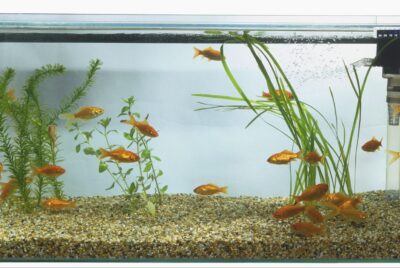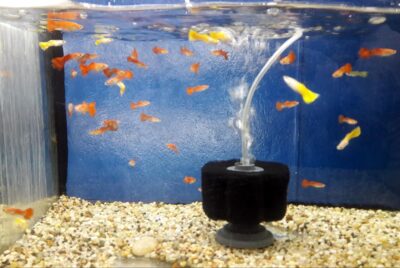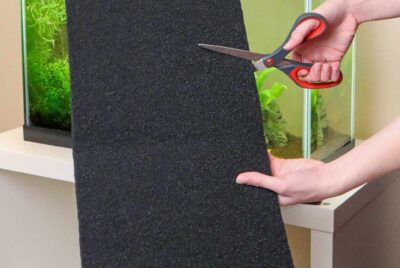How to Clean Aquarium Filter
Introduction
Oh, so you’re curious about how to clean aquarium filter, right? You’re in the right place! As a fellow aquarium enthusiast, I’ve been through the dirt and grime of filters, and I’ve got the scoop on how to keep them spick and span. Maintaining your aquarium is an essential part of pet fish ownership, and it involves more than just replacing the water.
Importance of Cleaning an Aquarium Filter
Maintaining Water Quality
Ever wondered why your fish tank water gets murky? It’s not all about the food and waste; your filter plays a crucial part in keeping the water clear and safe. Cleaning the filter helps to maintain the balance of beneficial bacteria and eliminates harmful toxins.
Ensuring Fish Health
A clean filter is essential for fish health. Keeping the filter clean guarantees the removal of harmful substances from the water and provides your finny friends with a safe environment.
Understanding the Types of Aquarium Filters
To maintain a healthy aquarium, it’s essential to know about the different types of filters that can be used. Each type performs a different function, and depending on your aquarium setup and species of fish, one may be more appropriate than another. The three main types of aquarium filters include mechanical, biological, and chemical filters. Let’s delve a little deeper into each one of them.
Mechanical Filters
Mechanical filters are like the front-line soldiers in the battle for clean aquarium water. They work on a simple principle: physically trap and remove solid particles from the water. These particles may include uneaten food, fish waste, decayed plant material, or any other debris.
The ‘mechanics’ of these filters involve different types of media such as foam sponges, filter pads, or floss. The water is forced through this media, trapping the solid particles while allowing the cleaned water to return to the aquarium.
While mechanical filters are excellent at their job, they do require regular maintenance. Without it, the trapped debris can start to decompose within the filter itself, leading to poor water quality. So cleaning these filters involves removing the media and rinsing it out thoroughly. However, never use tap water for this cleaning as it can kill beneficial bacteria. Instead, use a bucket of aquarium water.
Biological Filters
Biological filters are the unsung heroes of aquarium health, working behind the scenes to make the water safe for your aquatic friends. These filters deal with invisible threats: harmful ammonia and nitrites produced by fish waste and uneaten food.
These filters harbor beneficial bacteria (nitrifying bacteria) that convert these harmful chemicals into less harmful nitrates through a process known as the nitrogen cycle. The filter media for biological filters often consists of ceramic rings, bio balls, or sponges, designed to provide a large surface area for the bacteria to colonize.
Cleaning biological filters should be done with extreme care. A vigorous clean can destroy the colonies of beneficial bacteria, disrupting the nitrogen cycle. Instead, gently swish the media in a bucket of aquarium water to dislodge any debris.
Chemical Filters
Chemical filtration is like the special forces of aquarium cleaning—used for specific missions rather than regular maintenance. These filters use active substances, such as activated carbon, zeolite, or ion exchange resins, to remove various pollutants that mechanical and biological filters can’t.
Activated carbon is excellent at removing several impurities, including chlorine, heavy metals, discolorations, and odors. Zeolite can absorb ammonia, useful in new tanks that haven’t established the nitrogen cycle yet. However, keep in mind that once the media has absorbed its maximum capacity of contaminants, it can start releasing them back into the water.
Therefore, the media in chemical filters often needs to be replaced rather than cleaned. Always follow the manufacturer’s instructions when it comes to replacing this type of filter media.
Each type of filter plays a specific role in maintaining your aquarium’s health. Using them in combination can create a stable, clean environment that keeps your fish happy and healthy.
Step-by-Step Guide on How to Clean Aquarium Filter
Preparing the Cleaning – (How to Clean Aquarium Filter)
First, unplug the filter to ensure safety. Prepare a bucket of aquarium water for cleaning. Why aquarium water? Simple, tap water may contain chlorine, which can kill beneficial bacteria.
Cleaning Mechanical Filters – (How to Clean Aquarium Filter)
Remove the filter media and rinse it gently in the bucket of aquarium water. Avoid scrubbing or using detergents, as they can damage the filter media or harm your fish.
Cleaning Biological Filters – (How to Clean Aquarium Filter)
Rinse the filter media in the bucket of aquarium water. Do this gently to avoid disturbing the beneficial bacteria. If the filter is too dirty, consider replacing part of the media instead of cleaning it all.
Cleaning Chemical Filters– (How to Clean Aquarium Filter)
Remove the filter media and replace it with new media as per the manufacturer’s instructions. Remember not to rinse chemical filter media as this can wash away the active substances.
Tips for Regular Aquarium Filter Maintenance
Keeping your aquarium filter in tip-top shape is an ongoing job. It’s not particularly hard, but regular maintenance is crucial for the health and happiness of your aquatic friends. Here are some tips to help you stay on top of your filter game.
Inspect Your Filter Weekly
While the frequency of cleaning may depend on your specific aquarium setup, it’s always a good idea to give your filter a quick check every week. Look for any visible signs of clogging or wear and tear in the mechanical filter media. Check the water flow rate – if it seems to be slowing down, it might be time for a clean.
Plan Your Filter Cleaning Schedule
While a weekly inspection is great, your filter will also need regular deep cleaning. For most tanks, a monthly cleaning schedule works well. However, heavily stocked or overfed aquariums may require more frequent cleaning.
Use Aquarium Water for Cleaning
Always use tank water for cleaning your filter media, especially for mechanical and biological filters. Chlorine in tap water can kill the beneficial bacteria crucial for biological filtration.
Be Gentle
When cleaning, especially with biological filters, be gentle. Vigorous cleaning can disrupt the beneficial bacteria colonies. Instead, swish the media around in a bucket of tank water to remove debris.
Don’t Clean All Filter Media at Once
For systems with multiple filters or multiple media types in one filter, try to stagger your cleaning schedule. This way, you maintain a stable population of beneficial bacteria while still keeping the filter clean.
Know When to Replace the Media
Cleaning is essential, but sometimes the filter media needs to be replaced entirely. Chemical media need regular replacing, as they become less effective over time. Mechanical media, like sponges or pads, also wear out and will eventually need replacing. Follow manufacturer guidelines for media replacement.
Check the Impeller
The impeller is the part of the filter that pushes water into the device. It can get clogged with debris, slowing down the flow rate. During your regular cleaning, make sure to check and clean the impeller too.
Keep a Pre-filter
A pre-filter sponge added to the intake tube can catch larger debris, preventing it from getting inside the filter. This simple addition can extend the life of your filter and reduce cleaning frequency.
Monitor Your Water Quality
Keeping a regular check on your water parameters, especially ammonia, nitrite, and nitrate levels, can give you a good idea of how well your filter is working. Sudden changes may indicate that your filter needs attention.
Regular filter maintenance may seem like a chore, but it’s all part of the rewarding hobby of fishkeeping. With these tips, you can ensure your filter works effectively, creating a clean and healthy environment for your aquatic pets.
Conclusion
Knowing how to clean an aquarium filter is vital for any aquarium owner. Regular cleaning not only ensures your aquarium stays beautiful but also keeps your fish happy and healthy. Don’t shy away from getting your hands a little dirty—it’s all part of the fun in fishkeeping!
Frequently Asked Questions (FAQs)
Q: Can I clean the aquarium filter with tap water?
A: No, tap water often contains chlorine, which can kill beneficial bacteria in the filter.
Q:How often should I clean the aquarium filter?
A:This depends on the filter type and tank size, but a general rule is to check it weekly for any visible dirt.
Q: Do I need to replace the filter media every time I clean the filter?
A: No, except for chemical filters, most filter media can be cleaned and reused. However, if the media is too dirty or damaged, it may need replacing.
Q: Is it necessary to turn off the filter before cleaning it?
A: Yes, it’s crucial to turn off the filter before cleaning it for safety reasons.
Q: Can a dirty filter harm my fish?
A: Yes, a dirty filter can reduce the water quality in your tank, potentially leading to health issues for your fish. Regular cleaning is crucial to keep your fish healthy.




